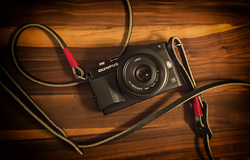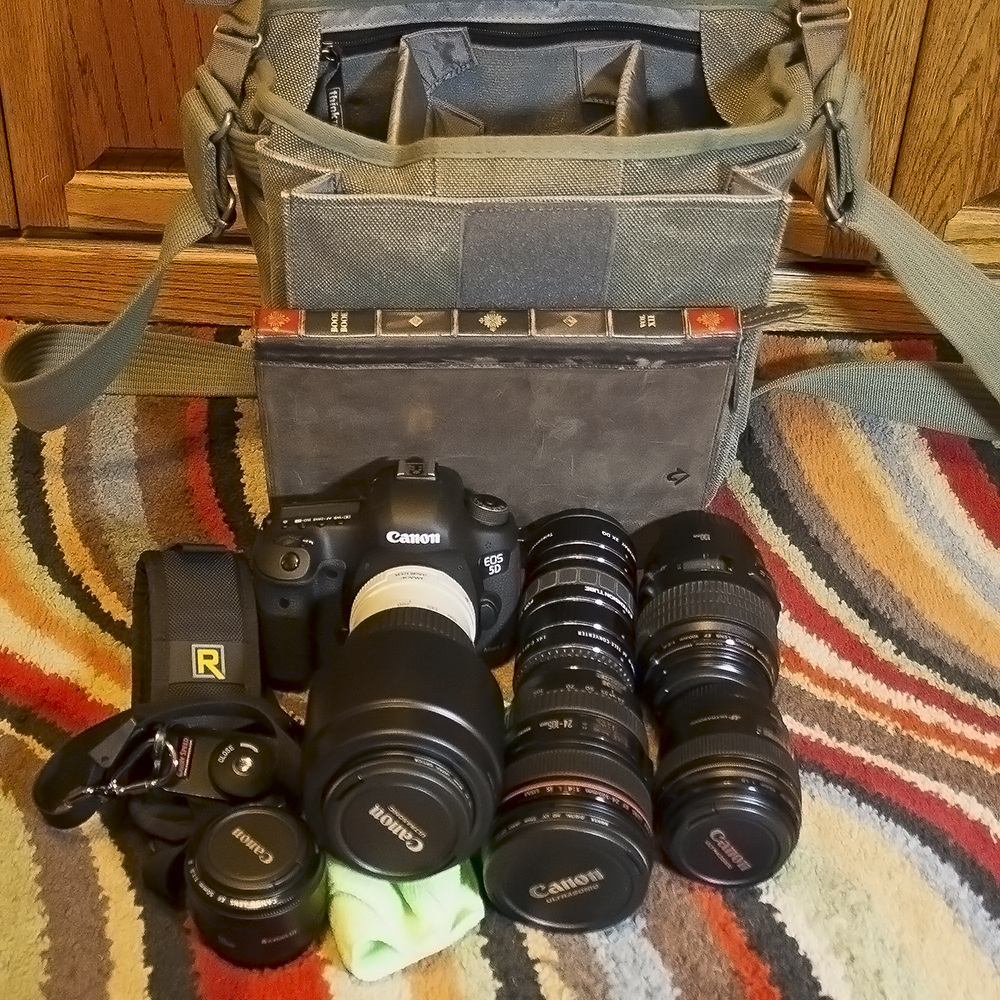
While doing research, I have run across a few articles about why some photographers are completely switching to micro four thirds (m43) for their work. A couple of these photographers are professionals, which seems to lend extra weight to their articles. (Keep in mind that most m43 articles are positive toward m43. Many full frame shooters have never considered switching, so they don't write articles about it.)
As has been said, the photographer is more important than the equipment. As an example, there are pros using the iPhone as their main camera. Therefore, it goes without saying that a pro can use an m43, a fixed lens camera, an iPhone or just about anything else that takes photos and still make a living. The question is whether your photography is more stylized with a fixed lens or requires the flexibility of a full frame.
One article mentioned several myths of the difference between full frame and m43. Included in this list is "the low light argument". The author agrees that full frame (FF) is better than m43 in low light, but he apparently doesn't believe that this type of feature is a benefit. After all, he says photographers haven't be concerned with low light capabilities for the majority of the past "100 years". While this may be true, people survived without running water for 100s of years, but we still like the benefit of technology that allows us to do things we could not do in the past.
Of course, if you always shoot with a flash, other lighting, or outdoors in great light, I guess you don't care about getting better, low noise pics in lower light? I would guess that most amateurs and many pros, would care, but apparently that idea is not totally universal.
Second, the article's second myth is "the shallower depth of field argument". He makes the argument that most pictures do not need shallow depth of field, and that when you do need it, you can shoot with one of the f1.8 prime lenses or add blur in Photoshop. Keep in mind that Canon makes a 50mm f1.8 that costs $125 and they also make a 50mm f1.2 that cost $1400. Obviously, Canon sells quite a few of these much more expensive lenses for a reason. People want the ability to shoot in low light or blur out a bad background. While even the inexpensive iPad Snapseed app has a feature to blur background, this can be time consuming and nearly impossible if you have a background that is similar in color to a subject's clothing or hair. Also, many photographers want to take a more photojournalistic approach with less editing.
The so called "myths" above are often the main difference in the price of lenses. If you want a fast lens, you can pay a lot more money for it. The other issue is that the m43's f1.8 lenses do not blur background the same way an f1.8 lens does on a FF camera. It would require an f 0.9 to get the same depth of field. Keep in mind, that f1.8 on a FF is a lot cheaper than an f1.2, so good luck finding an f0.6 lens to get a DOF similar to an f1.2.
This is my main issue with the m43 system right now and why I plan to keep two systems (FF and m43). If you want a fast zoom on m43, you currently need to spend over $1100 on a Panasonic 12-35mm f2.8 or $1300 on the 35-100mm f2.8. These will get you the same DOF as a f5.6 on a FF. I don't mind the blur difference between f2.8 and f4 for the major difference in price and weight, but going to f5.6 will definitely make a difference.
While I don't disagree with many of his other arguments, I do believe that the higher pixel count on many FF cameras make up a lot of the difference in the 2x crop factor for telephoto lenses. The best m43 sensors are currently using around 16 megapixels vs the 36 megapixels on the Nikon D800. With more than double the megapixels, a nature photographer could easily crop down a photo to make up for the difference in "crop factor". Also, many photographers, obviously not the author of the article, prefer wider angles than 24mm. There is a reason that Canon has the 16-35mm f2.8, 17-40mm f4, and a 10-22mm (APS-C). Panasonic makes a well reviewed 7-14mm m43 lens, so I am not sure why the author believes there is an issue with wide angle photos on m43, but I thought I would respond to this argument.
While the author of the "myths" article apparently doesn't care about shooting with high ISOs, shallow DOF, or ultra wide angles, my guess is that many photographers do care about these differences. In many ways, a casual photographer needs more flexibility in their lenses than a pro photographer that mainly shoots a specific type of photo. As an example, a person could be a pro and only shoot in a professionally lighted studio with subject matter that doesn't move and have a staff of editors that apply "enhancements". For the casual photographer, most of us want tons of flexibility. In one trip to New Orleans, for example, I may want an ultra wide lens for shooting inside a church, a fast lens for blurring out backgrounds to isolate a subject in a parade or on the street, or need to shoot at high ISOs in a jazz club. These needs are different from a professional still life photographer. Also, I have to edit my own photos, so I would rather get the photo as close to "print ready" when I take it.
While I do love the ability to stuff a camera in a jacket and have it with me, I am still not anywhere close to selling my Canon equipment to switch to shooting with m43 all the time. For one reason, the main benefit to m43 is the size and weight and Canon is already making a small APS-C camera that doesn't lose autofocus with their regular lenses (while using an adapter) and they also make a few small lenses to work with it. If they continue to make and expand on these small lenses and progress in several areas that they are lagging behind the m43s, I would rather go that direction. It would allow me to keep my current Canon lenses, give me more time to switch to smaller lenses, and also give the benefit of using the larger lenses with a smaller or larger camera and not lose autofocus like you do with m43 and an adapter. For me, a larger camera is often easier to balance, has more dials and buttons, and feels better in the hand (I have big hands). Many times, I would pick the larger camera even if the performance was the same.
For now, I am happy with what I get from m43, but it is no where close to the capabilities of FF. Here is a feature comparison of the OMD EM5 (which is the m43 mentioned in the article) vs the 5D MarkIII. I have an E-PL5, which is even lower rated than the EM5, so the difference is even bigger. That doesn't mean it won't take great pictures, but it is currently not as flexible as a full frame.
I hold out hope that Canon will continue to improve on the EOS M and I won't ever need to give up on their lenses or make a switch....I prefer expansion over a burn it down and start over approach. I only have three m43 lenses, so I could change over to EOS M with very little effort. Right now, I am getting by with the combination of both camera systems and an adapter that will allow manual focus on the E-PL5 with my current Canon lenses. I know this article sounds like I am bashing the m43, but I am mainly just pointing out the differences and why they matter to me. I bought the m43 because it will fit in a jacket pocket and the 5D won't. In other words, the m43 still has one major benefit over FF.
***I forgot to mention that the Continuous Autofocus on the FF (I have a Canon 5D Mark III) is much better than the Continuous AF on the E-PL5. I guess the author of the "myth" article can't explain that away. I really do hope that M43 catches up in the areas that it can because I do like the idea of a small system, but it just isn't there yet. As I said, this doesn't mean you can't get great shots with m43, but there are compromises that will need to be made for certain types of shooting. For me, it is worth having both systems right now.

 RSS Feed
RSS Feed